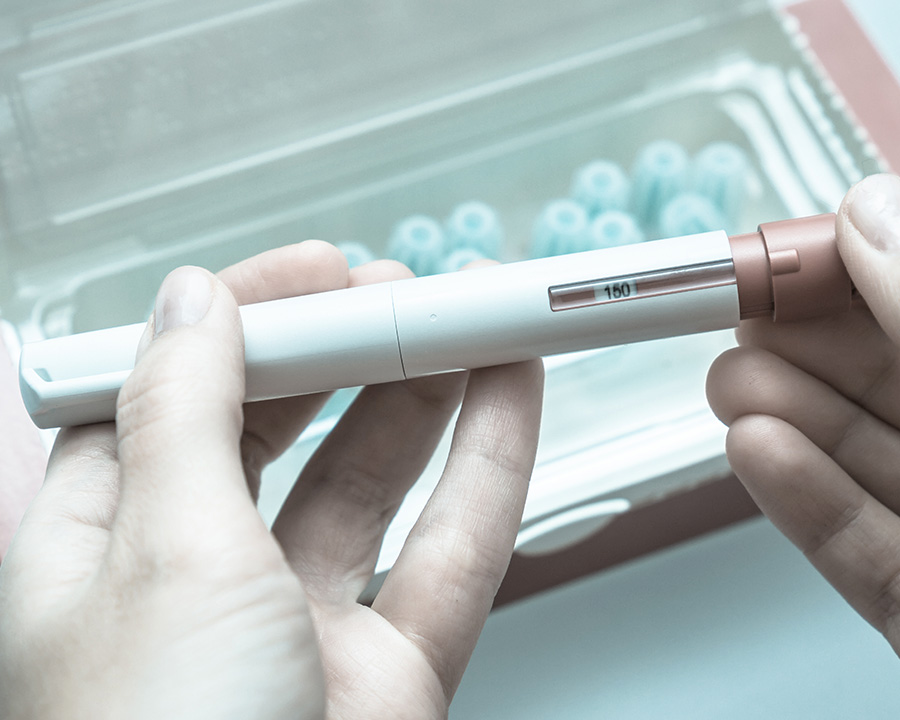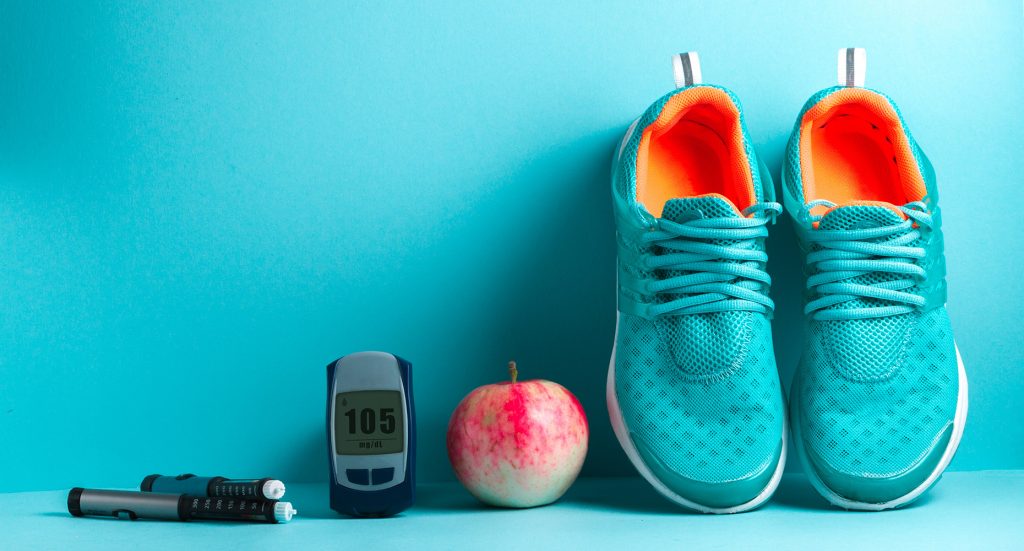Top Concerns in Women’s Health – Part 2
As we discussed in part one of this series, women are fundamentally different from men on a cellular level, which can lead to different health issues. Here we’ll examine three additional concerns common among women: reproductive health, diabetes and mental health.


Top Concerns in Women’s Health
Part 2 of a 2-part series
March 31, 2021
.
As we discussed in part one of this series, women are fundamentally different from men on a cellular level, which can lead to different health issues. Here we’ll examine three additional concerns common among women: reproductive health, diabetes and mental health.

Reproductive Health
Today, more and more women are waiting to start a family, many until their late 30s or 40s. Unfortunately, many of these women are blindsided when, after deciding to become pregnant, they encounter difficulties.
The issue has become so important that the American Society for Reproductive Medicine addresses it in detail in its “Protect Your Fertility” campaign.1 If you’ve got female patients of childbearing age who have decided to postpone starting a family, or women of advancing age who have not been able to get pregnant as quickly as they anticipated, there are a few points it might be helpful to gently point out to them.
• Age matters.
It’s a sad fact, but fertility declines with advancing age. According to the American College of Obstetricians and Gynecologists, healthy couples in their 20s or early 30s have about a 25 to 30 percent chance of becoming pregnant during any menstrual cycle; this chance starts to drop in a woman’s early 30s and drops more quickly after the age of 37. By the age of 40, a woman has less than a 10 percent chance of getting pregnant per cycle.2
• Women have a finite number of eggs.
Women are born with a certain number of eggs, and they are not replenished.2 In addition, the quality of a woman’s eggs deteriorates over time.
• Pregnancy losses increase.
Due to the quality of her eggs and other factors, a woman’s age can affect the viability of a pregnancy should she conceive. According to a 2019 study in BMJ, among more than 420,000 pregnancies studied, the risk of miscarriage was about 10 percent among women aged 25 to 29. Miscarriage rates rose rapidly after the age of 30 and continued to rise with age. Women aged 45 and over had a miscarriage risk of 53 percent.3
• Medicine may not be a viable option.
Some women have come to view medicine as being a cure-all for virtually everything — fertility included. But unfortunately, therapies cannot reverse the effects of age.
.
In the meantime, if a woman has decided to postpone pregnancy, it’s good practice to remind her of steps she can take to help protect her fertility: Don’t smoke; maintain a healthy body weight; and take precautions to protect against sexually transmitted diseases.1
Now for the good news: Advances in reproductive medicine have made pregnancy possible for many women who otherwise might not have been able to have children. From intrauterine insemination, to in vitro fertilization, egg and sperm donation, surrogacy and more, assisted reproductive technologies have made it possible for millions of people to become parents.



Diabetes
Many women are concerned about developing Type 2 diabetes, and for good reason: The disease has reached epidemic levels worldwide. According to 2020 estimates from the CDC, as of 2018, 34.1 million U.S. adults, or 13.0 percent of all people aged 18 and older, have diabetes. And while men tend to experience higher rates of the disease overall, women have higher rates among certain populations (American Indian/Alaska Native and Black, non-Hispanic).4
The good news for your patients is that positive lifestyle changes alone can prevent approximately 90 percent of prediabetes and Type 2 diabetes cases, the Harvard School of Public Health reports. The basics of prevention can be summed up in five words, Harvard experts say: “Stay lean and stay active.”5



How to Help Your Patients Prevent Diabetes
Following are steps your patients can take to help prevent Type 2 diabetes:
1. Lose weight if overweight.
Being overweight increases the risk of diabetes sevenfold; obesity raises the risk 20- to 40-fold. But losing just 7 to 10 percent of a person’s body weight reduces the risk by half.5
2. Move more.
A 2016 study found that one hour of brisk walking daily reduces the risk of Type 2 diabetes by 34 percent.6 The Mayo Clinic, meanwhile, reports that a combination of aerobic exercise and resistance training brings the most benefit.7
3. Skip the sugary drinks.
A 2010 study found that women who drank one or more sugar-sweetened beverages per day had a 26 percent higher risk of developing Type 2 diabetes than those who drank less than one such drink per month.8
4. Don’t smoke.
Smokers are approximately 50 percent more likely to develop diabetes than nonsmokers, Harvard Health reports.5
5. Make dietary changes.
Making healthy diet changes can decrease the chances of developing Type 2 diabetes. Experts at Harvard Health suggest that women: 5
- Avoid refined grains and other highly processed carbohydrates. Whole grains should be chosen instead.
- Choose healthy fats. The types of polyunsaturated fats found in nuts, seeds and vegetable oils can help prevent Type 2 diabetes.
- Limit red and processed meat: Research is increasingly showing that eating both unprocessed and processed red meat, even in small amounts, raises the risk of developing Type 2 diabetes. On the other hand, choosing healthier sources of protein, such as fish, low-fat dairy, nuts or poultry, can lower the risk by up to 35 percent.



Mental Health
If it seems you have more female patients presenting with symptoms of depression and anxiety or other somatic complaints, chances are your hunch is right. According to a report from the World Health Organization, evidence suggests that women do tend to suffer more from these conditions than men. In fact, citing depression as the most common mental-health condition among women, and suicide as a leading cause of death among women under the age of 60, the WHO says it is vital that healthcare providers make women aware of the importance of mental health.9
The WHO report was written in 2015, mind you. Add in the numerous difficulties surrounding the COVID-19 pandemic and the need for mental-health screening becomes that much more apparent.
What You Can Do for Your Patients
Mental-health screening is always important, but perhaps even more so in the throes of COVID. A September 2020 study in JAMA Network reported that one-fourth of people surveyed during the pandemic reported symptoms of depression — a greater than threefold increase over pre-COVID times. The study authors found that people most at risk included those with lower income or greater stressors in their lives.10
Acknowledging that we may, indeed, be in the midst of a mental-health pandemic, the American College of Obstetricians and Gynecologists recommends the following steps to help patients:11
- Ask your patients simple questions to help determine how they are doing both emotionally and socially. How is their energy level? Are they sleeping OK? Do they have any other symptoms of anxiety or depression?
- If they do have anxiety or depression due to the pandemic, remind them that those symptoms may not be long-lasting.
- Conduct a quick screening, asking questions such as whether they have anyone close to them who’s sick with COVID, or who has died from the disease. Also ask if they have any changes in their work and family life and whether they have a support system in place.
- If you do have a patient who’s in need of help, consider referring her to the American Psychological Association’s COVID-19 Information and Resources Page at https://www.apa.org/topics/covid-19 or the Substance Abuse and Mental Health Services Administration at https://www.samhsa.gov/find-treatment.
- Also keep in mind that telehealth visits can be extremely helpful when it comes to cognitive behavioral therapy. And don’t rule out self-help apps; the APA says they can be a valuable adjunct to — but not replace — therapy.12
.
The female psyche and body are unique and wonderful, and every woman in your practice deserves to be respected and honored, both physically and emotionally. We hope that with these articles, we’ve given you and your staff the tools to do just that.
Footnotes:
1 Protect Your Fertility Campaign. https://www.reproductivefacts.org/resources/protect-your-fertility-campaign/. Accessed Feb. 2021.
2 Evaluating Infertility. https://www.acog.org/en/Womens Health/FAQs/Evaluating Infertility. Accessed Feb. 2021.
3 Magnus, Maria C., et al. “Role of Maternal Age and Pregnancy History in Risk of Miscarriage: Prospective Register Based Study.” BMJ, vol. 364, Mar. 2019, p. l869. www.bmj.com, doi:10.1136/bmj.l869.
4 National Diabetes Statistics Report 2020: Estimates of Diabetes and Its Burden in the United States. U.S. Department of Health and Human Services Centers for Disease Control and Prevention, https://www.cdc.gov/diabetes/pdfs/data/statistics/national-diabetes-statistics-report.pdf. Accessed Feb. 2021.
5 “Simple Steps to Preventing Diabetes.” The Nutrition Source, 18 Sept. 2012, https://www.hsph.harvard.edu/nutritionsource/disease-prevention/diabetes-prevention/preventing-diabetes-full-story/.
6 Ley, Sylvia H., et al. “Contribution of the Nurses’ Health Studies to Uncovering Risk Factors for Type 2 Diabetes: Diet, Lifestyle, Biomarkers, and Genetics.” American Journal of Public Health, vol. 106, no. 9, Sept. 2016, pp. 1624–30. PubMed Central, doi:10.2105/AJPH.2016.303314.
7 “Diabetes Prevention: 5 Tips for Taking Control.” Mayo Clinic, https://www.mayoclinic.org/diseases-conditions/type-2-diabetes/in-depth/diabetes-prevention/art-20047639. Accessed Feb. 2021.
8 Malik, Vasanti S., et al. “Sugar-Sweetened Beverages and Risk of Metabolic Syndrome and Type 2 Diabetes: A Meta-Analysis.” Diabetes Care, vol. 33, no. 11, Nov. 2010, pp. 2477–83. care.diabetesjournals.org, doi:10.2337/dc10-1079.
9 Ten Top Issues for Women’s Health. https://www.who.int/news-room/commentaries/detail/ten-top-issues-for-women’s-health. Accessed Feb. 2021.
10 Ettman, Catherine K., et al. “Prevalence of Depression Symptoms in US Adults Before and During the COVID-19 Pandemic.” JAMA Network, vol. 3, no. 9, Sept. 2020. https://jamanetwork.com/journals/jamanetworkopen/fullarticle/2770146, doi:10.1001/jamanetworkopen.2020.19686.
11 Stephens, Stephanie. Six-Months After COVID-19: The Pandemic and Mental Health. https://www.acog.org/en/News/News Articles/2020/10/Six-Months After COVID-19 Pandemic and Mental Health. Accessed Feb. 2021.
12 Monitor on Psychology: Emerging Trends for 2021: What’s Ahead for Psychologists and the Field, American Psychological Association, https://www.apa.org/members/content/2021-trends-report.pdf. Accessed Feb. 2021.
Related Articles
Introducing the HemoCue Customer Portal
